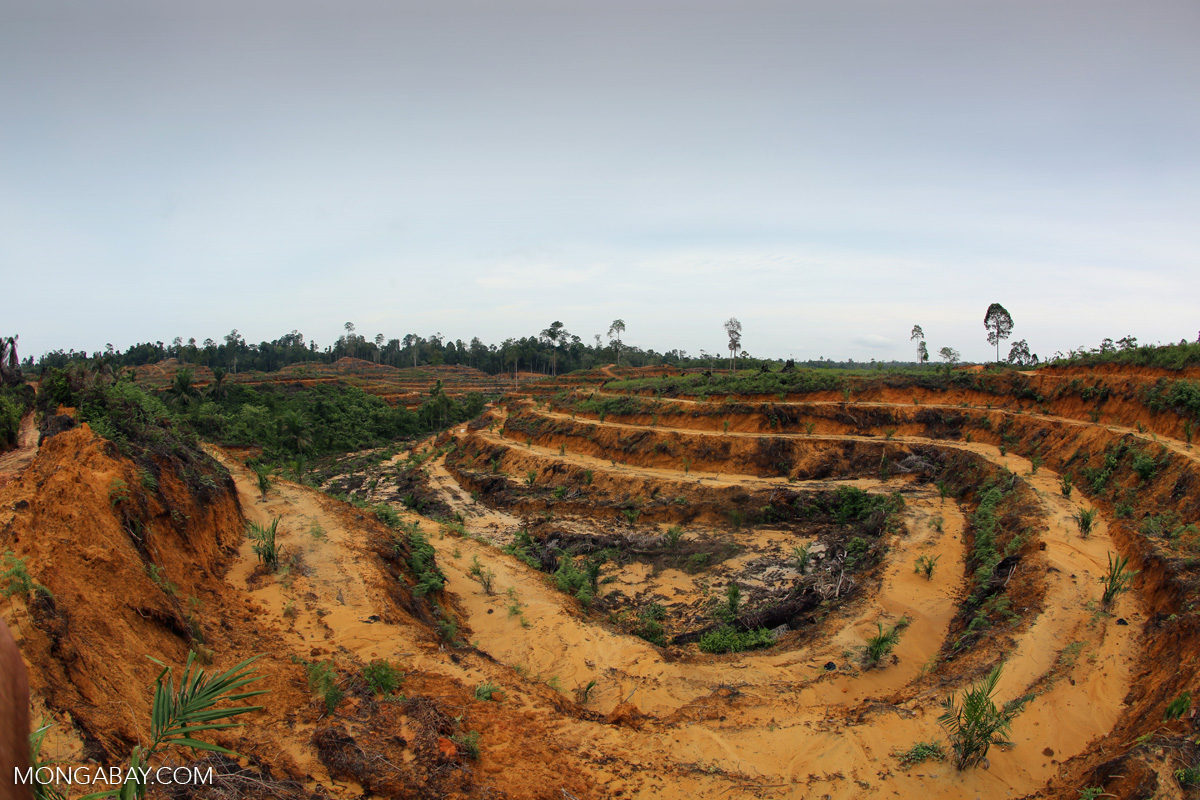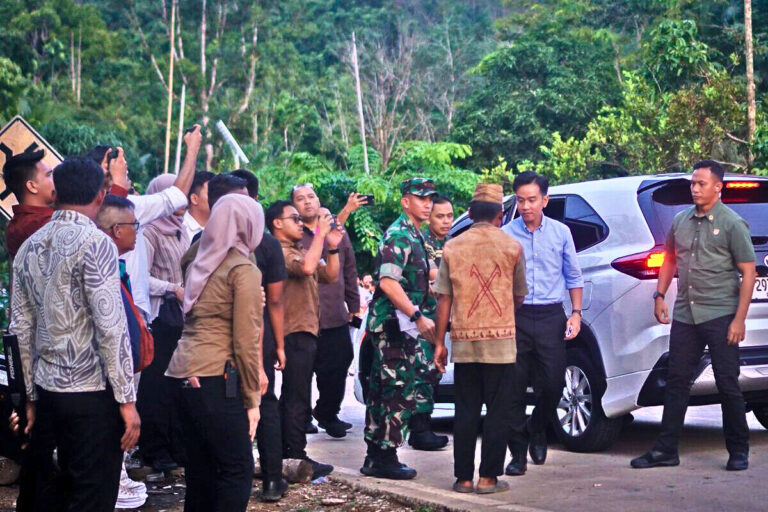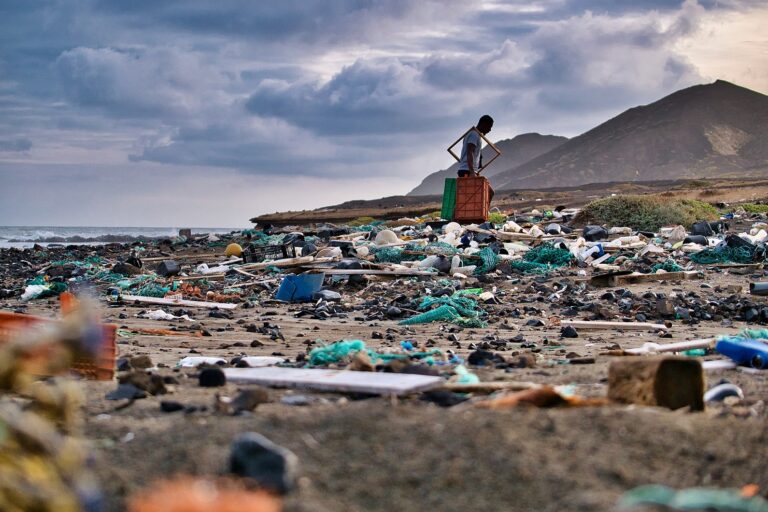- Oil palm growers in Indonesia can boost soil health and reduce their fertilizer use by adding waste biomass back to the soil, a new study says.
- Biomass such as pruned palm fronds and empty fruit bunches that have already been milled for their oil are rich in silicon, an important element in healthy oil palm plantations.
- Large palm oil companies already practice some form of this biomass cycling, but the high cost and effort means smallholder farmers are missing out on the benefits.
- There are 15 million hectares of oil palm plantations in Indonesia, with harvests taking place twice a week, which translates into an immense amount of biomass removal — and thus loss of silicon.
A new study recommends returning oil palm biomass to planting areas to maintain soil health — specifically, by replenishing the soil with silicon.
The research was published in April by a team of scientists from Indonesia’s Tadulako University, the Bogor Institute of Agriculture, and Germany’s University of Göttingen. Under a long-term research collaboration project named EFForTS (Ecological and Socioeconomic Functions of Tropical Forests Transformation System), the study is part of scientists’ investigations into the impact of landscape change to biodiversity, ecosystems and humans.
While previous studies have examined carbon loss from the establishment of oil palm estates, few have discussed the dynamics of soil minerals during the harvesting period — around 25 years for oil palm trees. “Few people are interested in this field,” study co-author Aiyen Tjoa, a soil biologist at Tadulako University, tells Mongabay.
While various minerals determine soil health, silicon, which is popular for its use in high-technology devices, captured Aiyen’s attention. Silicon is the second-most abundant element in the Earth’s crust, but the amount available for plants to absorb is limited, and its cycling in natural ecosystems depends heavily on the role of organisms. Plants need silicon to strengthen their cell walls, which helps defend against pathogens. As for the oil palm, silicon is needed to resist the effects of drought, according to Aiyen.

According to the study, oil palm accumulates high levels of silicon in all parts of the plant. A single tree can contain 4-5 kilograms (9-11 pounds) of silicon, with the highest concentration found in the fronds. Pruned oil palm fronds could return up to 131 kg of silicon per hectare (117 lbs per acre) each year, the study says. Oil palm fruits also contain a substantial amount of silicon. In practice, however, this potential accumulation is disrupted when the fruits are harvested and taken to the mill for processing into palm oil.
In Indonesia today, some 2.8 million hectares (6.9 million acres) of smallholder oil palms are nearing the end of their productive lives, per agriculture ministry figures, meaning the trees could soon be replanted — another chance for losing an immense amount of silicon, which has negative implications for soil health.
Aiyen therefore recommends that after the fruit is processed into crude palm oil, the empty fruit bunches should be returned to the plantation from where they were harvested. She also suggests that oil palm biomass produced as part of the government’s nationwide replanting program be converted into woodchips and left in the plantation areas to fertilize the soil for future planting. Both activities, Aiyen says, are already being undertaken by plantation companies, both private and publicly owned, but not by smallholders, said to account for 40% of the nation’s total palm oil production.
Mustangin, a smallholder farmer in Ogan Komering Ilir district, South Sumatra province, says he knows empty fruit bunches can serve as a natural fertilizer, but that he can only apply the method when he has enough money for transportation costs, since palm oil mills can be dozens of kilometers away from the farm. “I need to share the cost with other farmers,” he told Mongabay. “So it all depends on our financial situation.”
As for the chipping method, the government has already adopted it since it introduced a zero-burning policy for its replanting project for smallholders. In this nationwide program, the government funds 30 million rupiah ($2,000) per hectare, or about $800 per acre, for every farmer who wants to replant their oil palms. Local governments also support farmers with technical supervision such as chipping method after land clearing. But not every farmer can access this kind of support due to obstacles such as land ownership certification, which many Indonesians lack. At least in Sumatra’s Jambi province, where the study was conducted, “This practice has not yet been widely used and many plantations are on the verge of being replanted in the next decade,” University of Göttingen researcher Britta Greenshields wrote.

There’s also a trend of using oil palm stems and fronds as a source of economic income, says Iput Pradiko, a soil scientist at the Indonesian Oil Palm Research Institute in Medan, North Sumatra, who was not involved in the study. GAPKI, the palm oil business association, has said empty oil palm fruit bunches can be used in bioethanol production. Palm oil giant Asian Agri has supported women in Riau province to use oil palm fronds to make handicrafts. In North Sumatra, using oil palm fronds to make brooms has become a trend in the province, Iput says. He also points out that oil palm kernels have been exported to Japan to replace coal for generating electricity.
While this practice is beneficial in the short term, Aiyen says, all oil palm stakeholders should also consider the long-term effects. In Indonesia, the oil palm landscape spans 15 million hectares (37 million acres), with harvests typically taking place twice a week. That translates into an immense amount of biomass removal. “When there is a significant biomass removal from the plantation site, that would mean a greater silicon loss,” Aiyen says. “And that would mean we need silica fertilizer in the future.” Mustangin shares Aiyen’s concern, given what he describes as the high cost of fertilizer. “Please don’t make it too expensive and difficult to get,” he says.
Iput agrees that the government should pay more attention to oil palm biomass, and seconds Aiyen’s recommendation for putting the biomass back in the soil for the sake of soil health. “Whatever is taken from the soil, it must be returned as much as possible,” Iput says.
Banner image: Separating the oil palm fruit after harvest. Image by Deanna Ramsay/CIFOR via Flickr (CC BY-NC-ND 2.0).
From palm oil waste to cellulosic ethanol: Indonesia’s opportunity (commentary)
Citation:
Greenshields, B., von der Lühe, B., Schwarz, F., Hughes, H. J., Tjoa, A., Kotowska, M., … Sauer, D. (2023). Estimating oil-palm Si storage, Si return to soils, and Si losses through harvest in smallholder oil-palm plantations of Sumatra, Indonesia. Biogeosciences, 20(7), 1259-1276. doi:10.5194/bg-20-1259-2023














